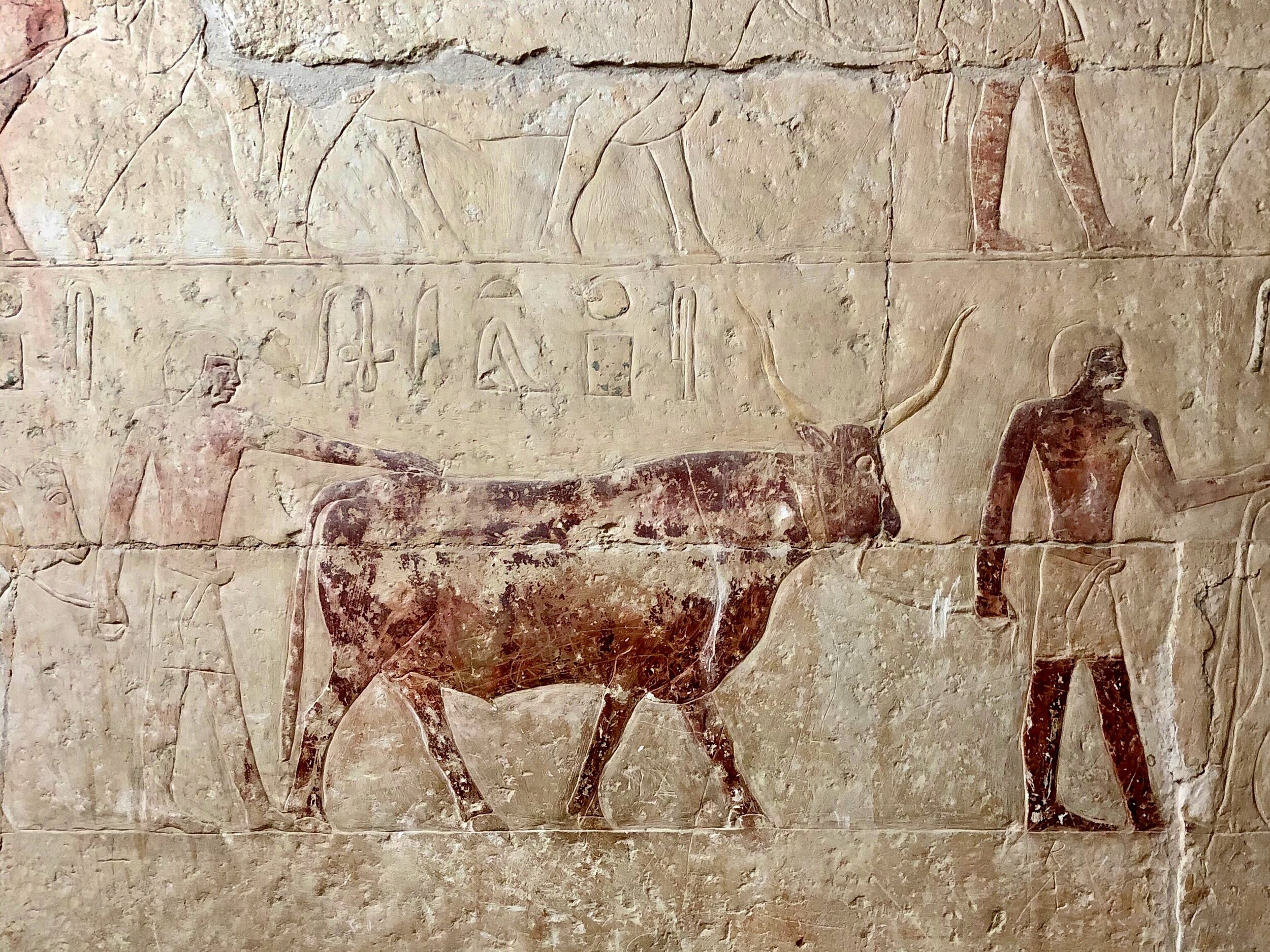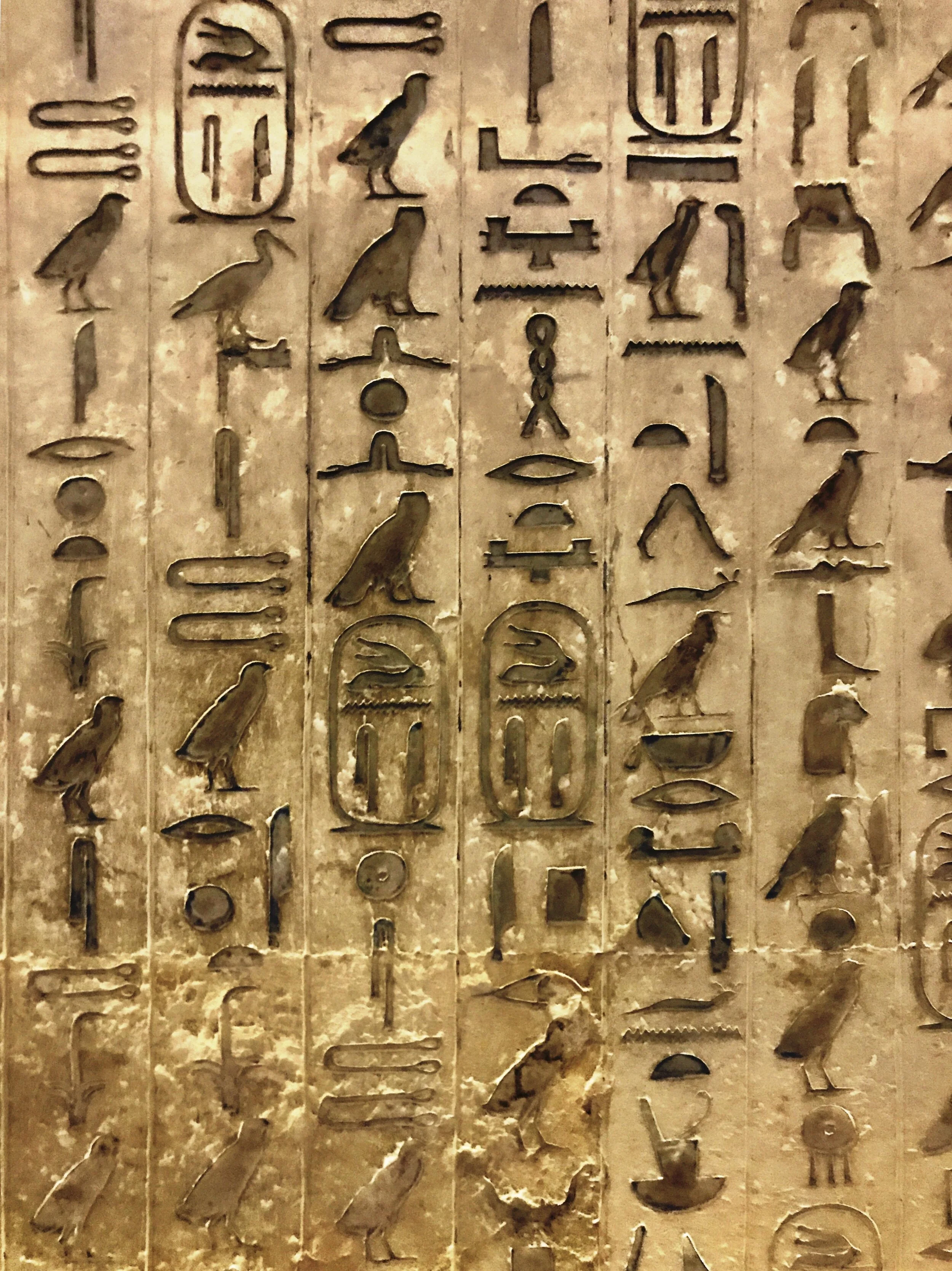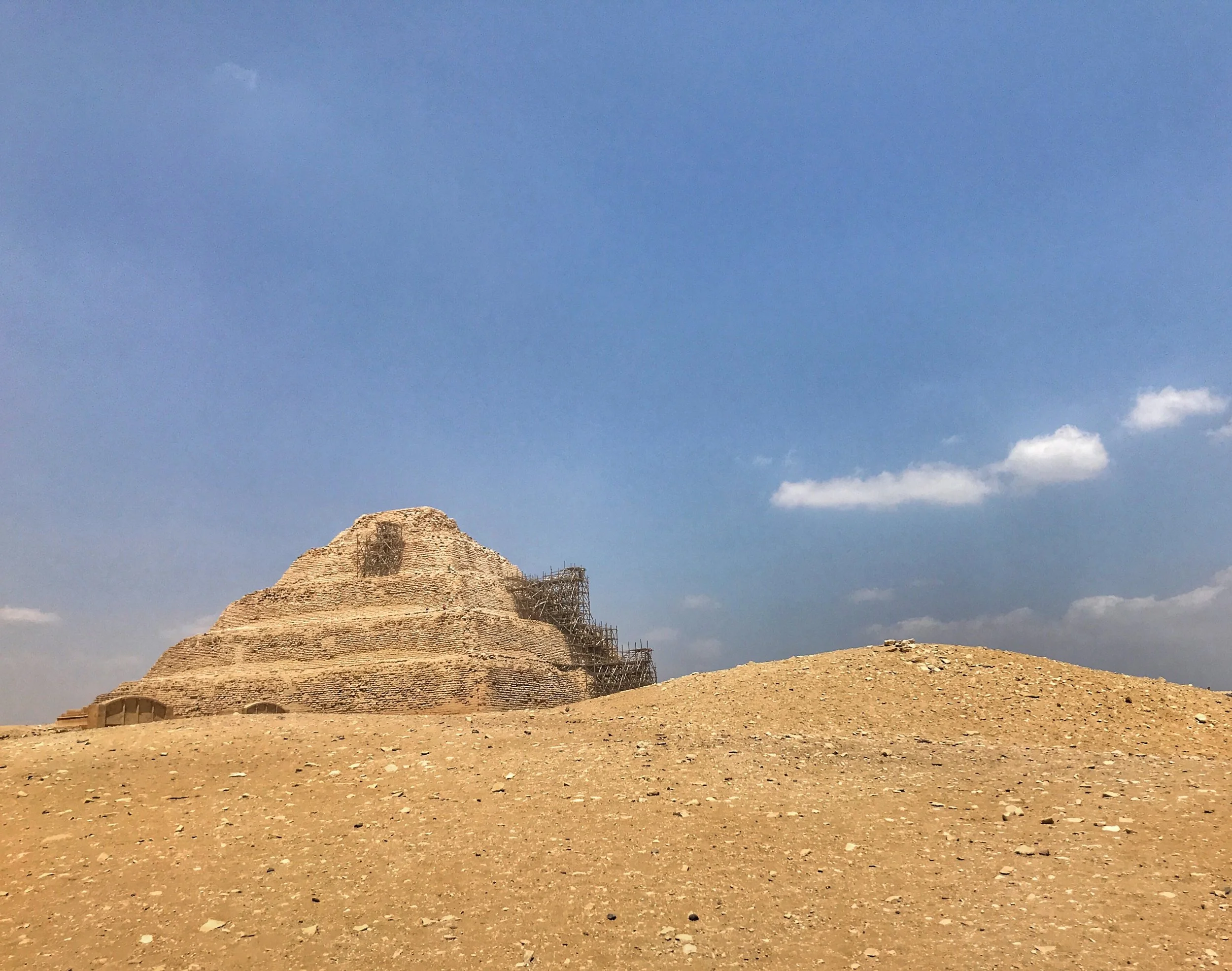The three royal Saqqara tombs of Inefrt V, Unas-Ankh and Idut offer a glimpse into the daily life of Ancient Egyptians.
Ancient Egyptians believed that a drawing of a sacrifice was as good as the real thing
For most of us, there are a couple of certainties about death: You can’t take it with you, and you can’t bring the dead back to life.
When pondering the finality of death, we try to reason with fate that it’s not our time to go while simultaneously contemplating the frightening prospect that one day, no matter how hard we try to avoid it, we’ll all end up as worm food.
“Two of the mastaba’s rooms were purchased by Edward Ayer, the first president of the Field Museum in Chicago.
Strangely enough, these entire rooms were dismantled and traveled by boat to the Windy City, where they were added to the Field’s permanent collection. They can still be viewed today. ”
Step through the doorway to enter a world over 4,000 years old
Not so for the royal and upper-class families of Ancient Egypt, who, although having lived life very much in the present, were preoccupied with achieving the ideal afterlife. The planning and preparation of sophisticated abodes where their souls would reside for eternity often began shortly upon birth. And when a pharaoh did die, if the right precautions were taken, their soul went on to enjoy living among the gods, while the souls of nobility were reborn into a utopia.
Wally walks like an Egyptian — and you should, too!
Duke’s happy we decided to explore the mastabas at Saqqara
A few Old Kingdom burial structures, known as mastabas (pronounced “mast-a-bahs”) are located within the cemetery complex of Pharaoh Unas at Saqqara. Built for his viziers, wives and offspring, these “forever homes” survived, immutable, for thousands of years, likely due to being hidden under sand. The flat-roofed, low-slung structures are all similar in size, with their exterior walls built of durable limestone blocks.
Servants bear offerings of beer, bread, fowl, meat and other goodies
Spirits in the Material World: Inefrt V’s Mastaba
The first mastaba that Wally and I went into was the tomb of Inefrt V, a vizier who served Pharaoh Unas from his mid to late reign around 2430 BCE. This was the most powerful title amongst the Egyptian social hierarchy, after that of king — in fact, they’re often called the prime ministers of the time — and Inefrt’s loyalty earned him a coveted final resting spot.
Finely sculpted limestone relief carvings throughout his tomb depict daily life. The mere utterance of the hieroglyphic inscriptions that accompany them were believed to spark magical powers to prepare the soul of the deceased for the next world.
Six small figures of the deceased, carved in sunken relief, face the central niche of the false door, which was used by the ka, or spirit
In the offertory chapel, one of several rooms, we paused in front of a niche with a false door. After the deceased had been laid to rest, family members and priests continued to bring food and other offerings, which were placed on a low bench-like slab in front of the false door through which the spirit, or ka, would pass through in order to receive sustenance. The dead, you see, still had to eat and drink even if they no longer held a physical form.
One of the mastabas shows offerings for Prince Unas-Ankh to enjoy during his afterlife
The Princely Digs of Unas-Ankh
The second mastaba tomb we entered belongs to Prince Unas-Ankh, the son of Queen Nebt and King Unas, who died around 2400 BCE. It was discovered and excavated in 1908 by British Egyptologist James E. Quibell, then the chief inspector at Saqqara. Many historians have speculated that the prince died before his father, as no male heir took the throne upon Unas’ death.
Surprisingly realistic depictions of fish are shown swimming beneath a boat
Scenes devoted to daily life include seated scribes going about their work
Two of the mastaba’s rooms, the offertory chapel and antechamber, were purchased from the Egyptian government by American business magnate Edward Ayer, the founding father and first president of the Field Museum of Natural History in Chicago. Strangely enough, these entire rooms were dismantled and traveled by boat to the Windy City, where they were added to the Field’s permanent collection of Ancient Egyptian artifacts. They can still be viewed today.
Why build a tomb when you can steal one like Princess Idut did? She’s shown smelling a lotus blossom, a symbol of rebirth
Princess Idut and the Usurped Lair of Ihy
The mastaba tomb of the vizier Ihy was the last of this group. Dated to circa 2360 BCE, it was discovered by British Egyptologist Cecil Firth in 1927 and further excavated by French Egyptologist Jean-Philippe Lauer. What makes this tomb particularly interesting is that it was later usurped and reused by Pharaoh Teti’s daughter, Princess Idut, who bears the title of king’s daughter of his body. Ihy’s name was erased, and scenes originally made for the vizier were adapted, with the figure of the princess replacing that of poor Ihy. These were executed in shallow relief and, perhaps because they were made over existing ones, are inferior in quality, in my opinion.
That baby hippo better watch out for the crocodile!
One of my favorite reliefs within the mastaba depicts a hippopotamus giving birth with a crocodile waiting to gobble up the newborn in its snapping jaws.
Be sure to visit the mastabas after exploring the depths of Unas’ pyramid
The Mastabas of the Unas Complex
The mastaba tombs Wally and I saw at Saqqara were multi-roomed affairs with corridors and a mortuary chapel with a false door for worship and offerings to the deceased. Reliefs often included scenes of hunting, netting fish, herding and butchering animals, threshing grain and other farming activities corresponding to events and experiences that the departed would have enjoyed in everyday life.
One of the main concerns beyond death for royalty and nobles alike was that the deceased would require food, and plenty of it. This bas-relief shows a graphic depiction of butchers slaughtering a bull
As our guide Ahmed hurried us past the mastaba entrances, we stopped and pointed at the doorways.
“What’s in there?” Wally asked.
“Some tombs,” Ahmed said, dismissively.
“Well, let’s go in then. We might only be here once — we want to see everything,” Wally said.
“That’s fine,” Ahmed snapped, obviously annoyed. “We can do that. But they’re all the same.”
Not only was this an alarming statement from a guide, who should be proud of his country’s heritage, it also just wasn’t true.
It wasn’t until then that we told Ahmed we were travel bloggers — and he looked sheepish and then upset, suddenly changing his tune, telling us that it was unfair to have withheld this detail from him and that he would have given us a different tour had he been informed. We thought that was a poor way to treat clients, and I can only imagine that he shared the same dispassionate and rushed tours with everyone.
That’s bull! Don’t let your guide at Saqqara try to pass by the mastabas in the Unas complex
Because of our lackluster Giza and Saqqara experience arranged through the Kempinski hotel concierge in Cairo, I would recommend getting the locations and sights you want to visit in writing and agreed upon the day before your visit. We didn’t — and as a result were subject to the rushed whims of our guide.
Admission to Saqqara cost 150 Egyptian pounds (about $9.50 at the time). Ahmed took us to the Step Pyramid, the entrance hall to Djoser’s Funerary Complex, the Pyramid of Unas, the above-mentioned mastaba tombs and the Imhotep Museum. Knowing what we know now, though, we could have easily have seen more time at Saqqara, including the Serapeum; the tomb of Irukaptah, nicknamed the “Butcher’s Tomb;” the tomb of Queen Nebt, one of the wives of King Unas; and the Tomb of the Two Brothers, possible gay lovers. –Duke





































